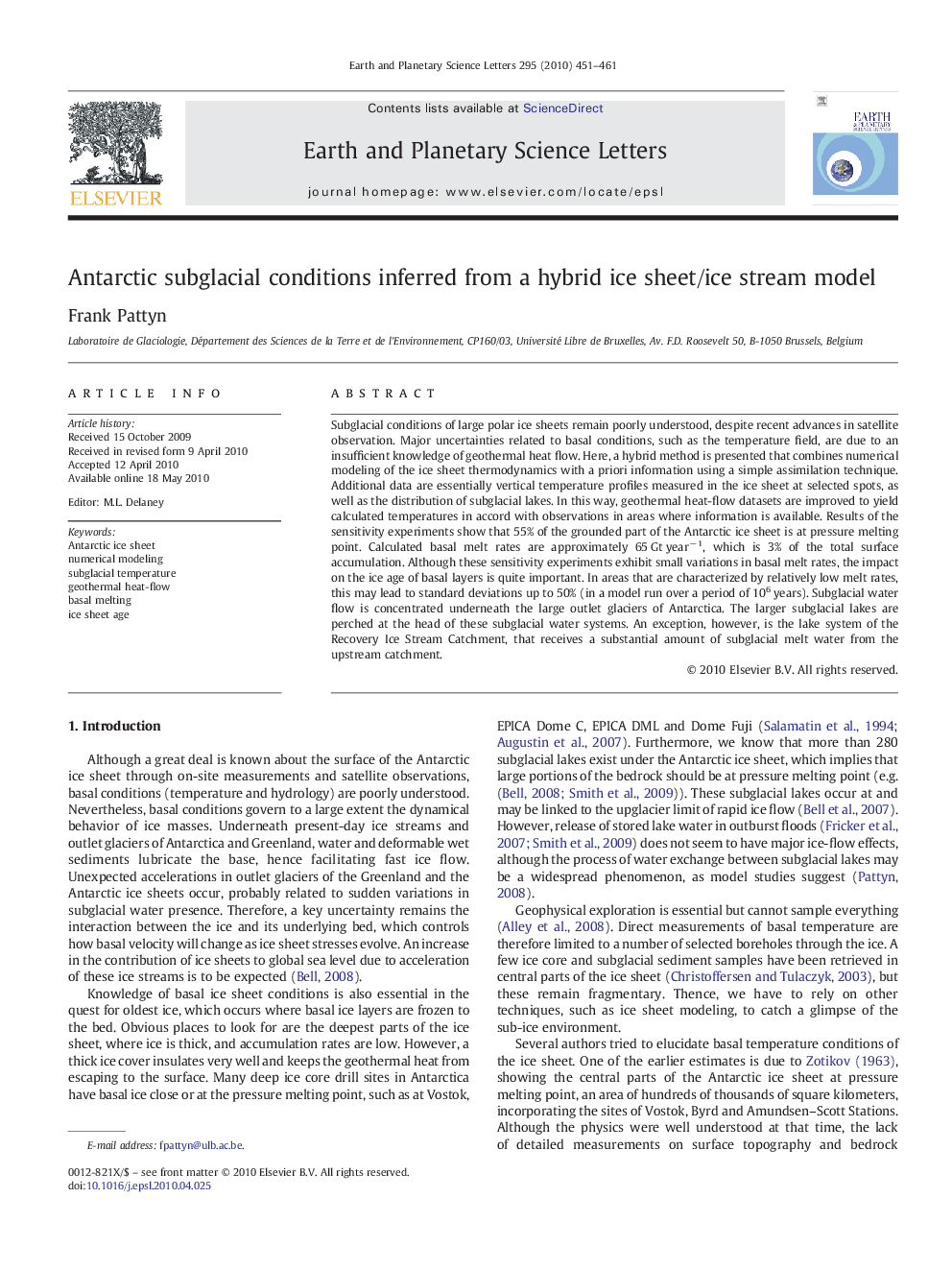| Article ID | Journal | Published Year | Pages | File Type |
|---|---|---|---|---|
| 4678610 | Earth and Planetary Science Letters | 2010 | 11 Pages |
Subglacial conditions of large polar ice sheets remain poorly understood, despite recent advances in satellite observation. Major uncertainties related to basal conditions, such as the temperature field, are due to an insufficient knowledge of geothermal heat flow. Here, a hybrid method is presented that combines numerical modeling of the ice sheet thermodynamics with a priori information using a simple assimilation technique. Additional data are essentially vertical temperature profiles measured in the ice sheet at selected spots, as well as the distribution of subglacial lakes. In this way, geothermal heat-flow datasets are improved to yield calculated temperatures in accord with observations in areas where information is available. Results of the sensitivity experiments show that 55% of the grounded part of the Antarctic ice sheet is at pressure melting point. Calculated basal melt rates are approximately 65 Gt year− 1, which is 3% of the total surface accumulation. Although these sensitivity experiments exhibit small variations in basal melt rates, the impact on the ice age of basal layers is quite important. In areas that are characterized by relatively low melt rates, this may lead to standard deviations up to 50% (in a model run over a period of 106 years). Subglacial water flow is concentrated underneath the large outlet glaciers of Antarctica. The larger subglacial lakes are perched at the head of these subglacial water systems. An exception, however, is the lake system of the Recovery Ice Stream Catchment, that receives a substantial amount of subglacial melt water from the upstream catchment.
